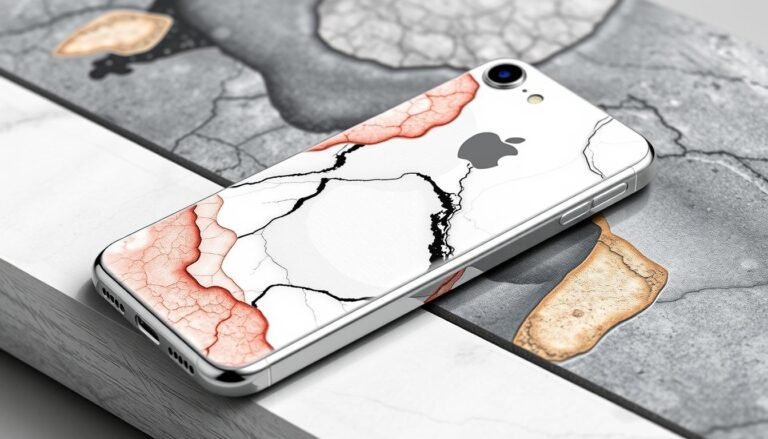My journey with thermal drones has revolutionized the way I conduct aerial analysis across various industries. By leveraging the unique capabilities of these advanced devices, I’m able to detect heat signatures that reveal critical information beyond what’s visible to the naked eye.

Using a camera mounted on a drone has significantly enhanced my inspection processes, offering increased safety, efficiency, and data accuracy compared to traditional methods. I’ve successfully deployed this technology in emergency services and industrial inspections, among other applications.
Table of Contents
Key Takeaways
- Thermal drones enhance aerial analysis by detecting heat signatures.
- Increased safety and efficiency in inspection processes.
- Improved data accuracy compared to traditional methods.
- Successful deployment in various industries, including emergency services.
- Unique capabilities for detecting critical information.
Understanding Thermal Drone Technology
Thermal drone technology has revolutionized the way I conduct aerial analysis. Thermal drones equip professionals like me with the tools to see what’s invisible to the naked eye, exceling in applications such as search and rescue missions, firefighting, and utility inspections.
What Makes Thermal Imaging Different
Thermal imaging is distinct because it captures infrared radiation, allowing for the creation of images based on temperature differences. This capability is crucial for detecting anomalies, such as hotspots in firefighting or equipment failures in utility inspections. The thermal imaging technology provides insights that are not visible to the naked eye or through traditional imaging methods.
How Thermal Sensors Work on Drones
The integration of thermal sensor technology into drones involves addressing challenges such as weight, power consumption, and data processing. I use different types of thermal sensors on my drones, each with its own capabilities in terms of resolution, sensitivity, and spectral ranges. These sensors capture infrared radiation and process it into meaningful thermal images that can be interpreted for various applications.
My Thermal Drone Equipment Setup
My experience with thermal drones has taught me that the right equipment setup is vital for achieving accurate results.
DJI Mavic3 Thermal: My Primary Tool
The DJI Mavic3 Thermal is my go-to drone for most missions. It offers a perfect balance between portability and performance, making it ideal for a variety of applications.
DJI Matrice350 RTK: For Advanced Missions
For more demanding tasks, I rely on the DJI Matrice350 RTK. Its waterproof rating of IP55 and extended flight time make it suitable for challenging environments. The 30° FOV (±15°) infrared sensing system is particularly useful.
Essential Accessories for Optimal Performance
To maximize the capabilities of my thermal drones, I’ve added several essential accessories. These include multiple batteries and rapid charging systems to extend flight time, specialized carrying cases to protect the equipment during transport, and additional payloads such as spotlights for night operations.
Effective battery management and having spare parts and repair kits on hand are also crucial for minimizing downtime and ensuring mission success.
Key Features I Look for in a Thermal Drone
In my work with thermal drones, I’ve learned to prioritize certain characteristics that enhance performance and reliability. When evaluating a thermal drone, I consider several critical features that directly impact its effectiveness in various applications.
Thermal Resolution and Sensitivity
The thermal resolution and sensitivity of a drone’s camera are crucial for capturing detailed thermal images. I look for drones with high-resolution thermal sensors that can detect even slight temperature differences, which is vital for applications like search and rescue or infrastructure inspection.
Flight Time and Range Capabilities
A thermal drone’s flight time and range capabilities are essential for determining its suitability for large-scale or complex operations. I prefer drones that offer extended flight times and robust transmission systems for reliable data collection over longer distances.
Weather Resistance and Durability

Weather resistance and durability are vital for thermal drones, especially when operating in challenging environments. For instance, a drone with an IP55 rating offers protection against dust and water, allowing operation in light rain or dusty conditions. Additionally, the ability to withstand wind gusts of up to 28.6 mph and operate in temperatures ranging from -4° to 113°F (-20° to 45°C) is crucial. I also prioritize drones with robust construction, protected gimbal systems, and reliable landing gear to ensure they can withstand the rigors of field operations.
Search and Rescue Operations: Finding the Invisible
In my experience with thermal drones, one of the most impactful applications is in search and rescue operations. Thermal drones have proven to be invaluable in locating missing persons, especially in challenging environments or at night when traditional visual methods are limited.
Locating Missing Persons in Challenging Environments
Thermal cameras on drones detect heat signatures, allowing for the location of individuals even when they are obscured by foliage, in darkness, or in other challenging conditions. This capability is crucial in search and rescue missions where every minute counts.
The table below summarizes the advantages of using thermal drones in search and rescue operations:
| Condition | Traditional Method | Thermal Drone |
|---|---|---|
| Darkness | Limited visibility | Detects heat signatures |
| Foliage Obstruction | Difficult to locate | Penetrates foliage |
| Time Sensitivity | Time-consuming | Rapid deployment |
Night Operation Techniques I’ve Mastered
Operating thermal drones at night requires specialized techniques. I adjust thermal camera settings such as emissivity and temperature ranges to optimize performance. Additional equipment like navigation lights and spotlights can enhance situational awareness. Despite challenges like reduced depth perception, these techniques have allowed me to successfully conduct night search and rescue missions.

Firefighting Support: My Approach to Heat Detection
By leveraging thermal drones, I’ve been able to provide firefighters with actionable intelligence on heat detection and fire behavior during critical incidents. Thermal drones help firefighters detect hidden dangers and track fire progression in real time.
Identifying Hotspots and Fire Spread Patterns
Using thermal drones equipped with advanced sensors, I can identify hotspots within structures and monitor fire spread patterns. This capability is crucial for hotspot detection and understanding the movement and intensity of wildfires.

Coordinating with Ground Teams
Effective coordination between my aerial thermal operations and firefighting ground teams is critical. I use real-time video feeds and thermal mapping to provide ground teams with actionable intelligence about fire conditions they cannot see. By understanding firefighting tactics and strategies, I can anticipate the information needs of ground teams and provide relevant thermal data without being asked.
Law Enforcement Applications in My Experience
I’ve witnessed firsthand the impact of thermal drones on law enforcement, transforming how they operate in challenging conditions. Thermal drones enhance situational awareness, enabling law enforcement to operate more effectively.
Surveillance and Suspect Tracking
In my experience, thermal cameras on drones have been instrumental in surveillance and suspect tracking. They allow for overwatch operations, monitoring large areas for unauthorized activities even in low-light conditions. Additionally, they facilitate suspect pursuit by detecting body heat signatures, making it easier to track fleeing individuals.
Evidence Collection from Above
When it comes to evidence collection, thermal drones have proven invaluable. I use drones equipped with thermal cameras to locate evidence that might be invisible to the naked eye, such as recently buried items or disturbed surfaces. I document thermal evidence meticulously, capturing metadata, verifying timestamps, and geotagging to establish when and where thermal anomalies were detected. This process ensures the integrity of the evidence and its admissibility in legal proceedings.
Infrastructure Inspection: My Methodical Process
In my line of work, thermal drones play a crucial role in infrastructure inspection, enabling me to detect issues early. Thermal drones help detect structural issues and inefficiencies, enabling faster and more accurate assessments of various infrastructure components.

Power Line and Electrical Equipment Analysis
I use thermal drones to inspect power lines and electrical equipment, identifying potential hotspots that could lead to failures. This proactive approach helps prevent outages and ensures the reliability of the electrical grid.
Building Envelope and Roof Assessments
Thermal drones are instrumental in assessing building envelopes and roofs, detecting areas of heat loss and water intrusion. By identifying temperature anomalies, I can pinpoint where insulation is compromised or where moisture is accumulating under roofing materials.
“Thermal imaging allows us to see beyond the surface, revealing issues that are not visible to the naked eye.”
Pipeline Monitoring Techniques
I employ thermal drones to monitor pipelines, detecting leaks, insulation failures, and flow issues through temperature variations. By identifying the thermal signature of escaping fluids, I can locate leaks and areas of degradation, helping operators address issues before they result in environmental damage or safety hazards.
My methodical process ensures comprehensive inspections and accurate assessments.
Agricultural Monitoring: Crop and Livestock Management
I utilize thermal drones for effective agricultural monitoring, enhancing crop and livestock management. This approach allows farmers to make data-driven decisions, improving overall farm productivity.
Crop Health and Irrigation Needs
Thermal imaging from drones helps assess crop health by detecting temperature variations, indicating stress or disease. This information is crucial for planning irrigation and other agricultural practices. For instance, a thermal camera can identify areas of a field that are under stress due to lack of water or pest infestation.
The data collected can be used to create detailed reports on crop health, enabling farmers to take timely action. Effective irrigation management not only conserves water but also reduces the risk of crop failure.
| Crop Condition | Thermal Imaging Indicator | Action Required |
|---|---|---|
| Healthy | Uniform temperature | Maintain current practices |
| Stressed | Higher temperature | Irrigation or pest control |
| Diseased | Lower temperature or hotspots | Apply fungicides or remove affected plants |
Tracking and Monitoring Livestock
Thermal drones are also invaluable for tracking and monitoring livestock across large pastures or rangelands. They can detect animals even when hidden in vegetation or terrain features, significantly reducing the time and resources required for traditional livestock checks.
Using a thermal camera on drones, I can locate animals and monitor their health. Elevated body temperatures can indicate illness or injury before behavioral symptoms become apparent, allowing for timely intervention.

Examples of successful livestock monitoring services have shown improvements in herd management, reduced losses, and optimized pasture utilization through better understanding of animal distribution and behavior.
Solar Panel Inspection: Maximizing Energy Efficiency

Thermal drones have become an essential tool in my work, particularly for inspecting solar panels and ensuring they operate at peak efficiency. By leveraging thermal imaging, I can identify issues that are not visible to the naked eye, such as faulty panels or malfunctioning cells.
Identifying Faulty Panels and Connections
Fault detection is a critical aspect of solar panel maintenance. I use thermal drones to spot temperature discrepancies across the solar array, indicating potential problems. This method allows for the early detection of malfunctioning components, which can significantly impact overall system performance.
Reporting and Analysis Methods I Use
My approach to reporting and analyzing solar panel thermal inspection data involves several key steps. I classify thermal anomalies based on temperature differentials and pattern recognition. I prioritize issues based on severity and potential energy loss, providing clients with actionable insights rather than just raw images. This includes annotated thermal images and summary tables to help maintenance teams address critical issues efficiently.
By quantifying the efficiency impacts of thermal issues, I help clients understand the potential energy production losses and justify necessary repairs. This comprehensive analysis ensures that solar panel systems operate at their maximum potential, enhancing overall efficiency.
Data Collection and Analysis Workflow
Analyzing thermal data from drone operations involves a blend of technical knowledge and industry experience. My workflow for analyzing thermal data is designed to extract valuable insights that inform decision-making across various applications.
Software Tools That Enhance My Thermal Imaging
I utilize specialized software tools to enhance the quality and usefulness of thermal imaging data. These tools include thermal imaging processing software that allows for detailed analysis and reporting. Some of the key features of these tools include:
- Advanced image processing algorithms
- Data visualization capabilities
- Integration with other data sources for comprehensive analysis
My Process for Interpreting Thermal Data
My systematic approach to interpreting thermal data combines technical knowledge with experience-based pattern recognition. This involves:
- Establishing baseline thermal conditions for different materials and systems
- Distinguishing between relevant thermal anomalies and normal variations
- Correlating thermal patterns with specific issues based on shape, intensity, and location
- Quantifying the severity of thermal anomalies through comparative analysis and temperature thresholds
By following this structured analysis workflow, I can provide accurate and actionable insights from thermal drone data.
Overcoming Environmental Challenges with Thermal Drones
The success of thermal drone operations hinges on overcoming the challenges posed by varying environmental conditions. Factors such as ambient temperature, humidity, and wind can significantly influence thermal readings, making it crucial to adjust operations accordingly.
Dealing with Weather Variables
Weather conditions play a critical role in the effectiveness of thermal drone operations. For instance, high humidity can reduce thermal contrast, making it challenging to detect anomalies. To mitigate this, I adjust my flight plans according to weather forecasts, ensuring optimal conditions for data collection.
| Weather Condition | Impact on Thermal Imaging | Adjustment Strategy |
|---|---|---|
| High Humidity | Reduces thermal contrast | Reschedule flights for lower humidity |
| Strong Winds | Drone stability affected | Use stabilizing equipment or fly during calmer periods |
| Extreme Temperatures | Affects battery performance and thermal readings | Monitor battery health and adjust flight duration |
Adjusting for Different Times of Day
The time of day significantly affects thermal imaging due to solar radiation and diurnal temperature cycles. I optimize my operations by leveraging the pre-dawn hours for inspections when thermal contrasts are maximized. During midday, I employ techniques to counteract the effects of solar loading, which can create misleading thermal patterns. In the evening, I utilize the transition period when surfaces cool at different rates, revealing valuable information about subsurface issues or structural differences.
By understanding and adapting to these environmental challenges, I can ensure the accuracy and reliability of my thermal drone operations, ultimately enhancing the quality of the data collected.
Advanced Techniques I’ve Developed for Thermal Drone Operations
As I continue to push the boundaries of thermal drone operations, I’ve developed advanced techniques that significantly enhance the quality and efficiency of my work. One of the key advancements is in combining visual and thermal imaging to get a more comprehensive view of the area or subject being inspected.
Combining Visual and Thermal Imaging
Using equipment like the Zenmuse XT2 R, which offers dual visible and thermal imaging capabilities, I’ve been able to leverage the strengths of both types of imaging. This combination allows for more accurate analysis and detection. For instance, the FLIR MSX technology enhances the thermal images with visible light details, providing a clearer picture.
Automated Flight Patterns for Comprehensive Coverage
I’ve developed and refined automated flight patterns to ensure thorough coverage during inspections. This includes grid pattern flights for area surveys, where I determine optimal altitude and overlap percentages based on the required thermal resolution and area size.
| Inspection Type | Flight Pattern | Benefits |
|---|---|---|
| Area Surveys | Grid Pattern | Comprehensive coverage, efficient data collection |
| Linear Infrastructure | Waypoint Missions | Precise inspection, adaptive speed control |
| Vertical Structures | Orbital Inspection | Consistent distance and camera angles |
By combining these advanced techniques with the right equipment, I can ensure that my thermal drone operations are both effective and efficient.
Conclusion: The Future of My Thermal Drone Operations
As I reflect on my journey with thermal drones, it’s clear that this technology has revolutionized aerial analysis. I’ve utilized thermal drones across various applications, from emergency services to industrial inspections, significantly enhancing my operations and capabilities. The unique value provided by thermal drone technology has transformed my approach, offering insights that traditional methods can’t match. I’m excited to incorporate emerging trends and technologies into my operations, including new sensors and analysis techniques. This will enable me to expand my thermal drone capabilities, driving future growth. As I look to the future, I envision continued evolution and new possibilities for aerial analysis.
FAQ
What is the typical flight time for a high-end thermal drone like the DJI Matrice 350 RTK?
The DJI Matrice 350 RTK has a maximum flight time of up to 55 minutes, depending on the payload and environmental conditions.
How do I choose the right thermal camera for my drone?
When selecting a thermal camera, consider the resolution, sensitivity, and compatibility with your drone. For instance, the Teledyne FLIR thermal camera offers high-resolution imaging and is compatible with various drone models.
Can thermal drones operate in harsh weather conditions?
Yes, many thermal drones, such as the Autel EVO Max, are designed with weather resistance in mind, featuring IP55 ratings or higher, allowing them to operate in challenging environments.
What are the benefits of using a thermal drone for search and rescue operations?
Thermal drones can quickly locate missing persons, even in low-light conditions, by detecting heat signatures, making them invaluable for search and rescue missions.
How do I ensure accurate data collection with my thermal drone?
To ensure accurate data collection, it’s essential to use a drone with a high-quality thermal sensor, such as the DJI Mavic 3 Thermal, and to follow a systematic flight pattern, adjusting for variables like time of day and weather conditions.
Can I use thermal drones for infrastructure inspection, such as power line monitoring?
Yes, thermal drones are well-suited for infrastructure inspection, allowing for the detection of heat anomalies in power lines, electrical equipment, and other critical infrastructure.
What software tools are available for analyzing thermal data?
Various software tools, such as those provided by Teledyne FLIR, can enhance thermal imaging analysis, offering features like temperature measurement and anomaly detection.
How do I adjust my thermal drone operations for different times of day?
To adjust for different times of day, consider factors like ambient temperature, sunlight, and shadows, and adjust your flight plan and camera settings accordingly to optimize image quality.






